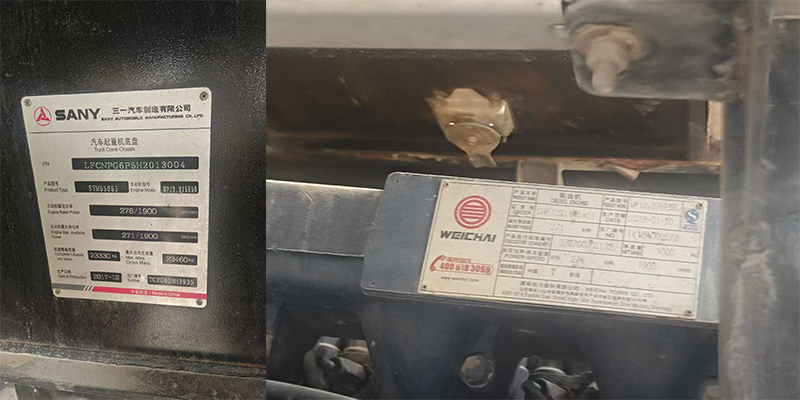E-mail: [email protected] Whatsapp: +8613647327093 Tel: +86-731-8403-0163
E-mail: [email protected] Whatsapp: +8613647327093 Tel: +86-731-8403-0163
It is well recognized that the used rotary drilling rig market is increasingly favored due to its cost-effectiveness. This has led to more people flocking to the used rig business, resulting in a progressively chaotic transaction environment where various fraudulent practices are rampant. According to recent field reports from our sales team, some of our clients have fallen victim to scams, incurring significant financial losses. So, what are the common pitfalls in the used rotary drilling rig market, and how can we steer clear of them?
1. Fake Machine Identity / Fraudulent Equipment
Frankenstein Machines: Rigs cobbled together from parts of different brands/models, with mismatched nameplates and serial numbers.

Missing Documentation: Lack of certificate of conformity, import certificates, or original invoices, hindering future resale, customs clearance, or financing.
Countermeasure: Cross-check serial numbers on the mainframe and key components (engine, hydraulic pumps, undercarriage). Contact the manufacturer to verify authenticity if necessary.
2. Concealed Usage History / Hidden Work Conditions
Used extensively in high-intensity applications like hard rock, port terminals, or large-diameter bridge piles, causing significantly more wear than typical soil work.
Sellers may claim "only used for small piles" when the rig actually endured prolonged heavy-duty operation.
Countermeasure: Scrutinize high-stress areas: drill pipe, drill teeth (cones/rollers), hoist wire rope, weld joints at the mast base. Wear levels reveal the true operating history.
3. Hidden Hydraulic & Powertrain Issues
Hydraulic System: May operate fine briefly but overheats and becomes sluggish during prolonged operation.
Engine: RPMs may have been tampered with; contaminated with inferior oil. Sounds okay during a short test but has significantly reduced lifespan.
Countermeasure: Insist on a prolonged operational test (at least 30+ minutes). Monitor hydraulic oil temperature, system responsiveness, and engine exhaust smoke color.
4. Hidden Accident-Damaged Machines
Rigs that suffered mast breakage, rollovers, or major undercarriage repairs, with damage hidden by re-welding and repainting.
Such equipment is prone to recurring problems and may pose safety hazards.
Countermeasure: Inspect mast, undercarriage, and mainframe weld joints for signs of rework/repair. Check if symmetrical components show mismatched wear/age ("new vs. old").
5. Cosmetic Fixes Masking Major Issues (Lipstick on a Pig)
Sellers replace only cosmetic parts (cab, paint, lights) to make the rig look "like new".
Critical components like hydraulic pumps, travel system, and main winch may be severely worn.
Countermeasure: Don't be fooled by a "fresh paint job". Focus inspection on core systems.
6. Inflated Pricing or Suspiciously Low Prices
Overpriced: Seller inflates the market value, often by 20%-30%.
Too-Good-To-Be-True Low Prices: Often indicates a "frankenstein" machine or accident-damaged rig, leading to much higher repair costs later.
Countermeasure: Research current market prices thoroughly. Assess if the asking price reasonably reflects the machine's hours and depreciation.
1. Operational Test is Mandatory
Check cold start: Should be smooth, no strange noises or excessive smoke.
Check hydraulic functions: Should be smooth and stable, no overheating during extended run.
2. Bring an Expert for Inspection
Ideally, bring an experienced rig operator or maintenance technician. They can spot and hear subtle problems.
3. Use Staged Payments
Sign contract → Pay deposit → Pay final balance ONLY after successful inspection and acceptance. Avoid lump-sum payments upfront.
4. Budget for Repairs & Maintenance
Even a good-condition used rig needs a repair & maintenance buffer (recommend 10%-15% of purchase price).
5. Prioritize Reputable Sources
Manufacturer-certified used units or rigs retired from established contractors are generally more reliable.
Avoid machines of unknown origin or privately assembled "frankenstein" rigs whenever possible.
Part 1: Machine Basic Information
Include Manufacture, Model No., Manufacture Year, Engine Brand, Engine Model, Working Hour, Date of Test, Test Engineer, Location
Part 2: Machine Testing List
1. Upper Carriage: Engine, Main Hydraulic Valve, Main Oil Pump, Electric Cabinet, Hydraulic Oil, Cabin
2. Travel Unit: Crawler, Oil Cylinder, Hydraulic Motor, Reducer
3. Main Winch: Main Winch Motor, Main Winch Reducer
4. Rotary Drive: Hydraulic Motor, Reducer, Rotary Box
5. Luffing Mechanism: Boom Oil Cylinder, Support Bar, Luffing Oil Cylinder
6. Mast: Auxiliary Winch Motor, Auxiliary Winch Reducer, Pressurized Motor, Mast Oil Cylinder
7. Kelly Bar: Type, Specification, Condition
Part 3: Machine Pictures
1. Overall appearance
2. Operator Cabin PC
3. Kelly Bar
4. Operator Cabin Interior
5. Rotary Head
6. Engine
7. Engine Nameplate
8. Main Hydraulic Valve
9. Swing Reduction Gearbox
10. Hydraulic Motor
11. Hydraulic Cylinder
12. Main Oil Pump
13. Hydraulic Oil Check
14. Exterior of Electrical Cabinet
15. Interior of Electrical Cabinet
Part 4:Machine evaluation and maintenance recommendations
1. Machine evaluation
2. Maintenance Recommendations & Checklist
If you are still not clear about how to check the used rotary drill rig, welcome to contact us and our professional sales and QC team will support you to choose reliable used machines based on your needs.
Till 2024, Drillmaster became the top1 used rotary drilling rig exporter in Hunan, China. The repurchase rate reach 63%. Its integrity-driven business philosophy and widely acclaimed product quality have won deep trust from customers.
Drillmaster, Your Trusted Choice!
WhatsApp: +8613647327093

Email: [email protected]
Contact Us
